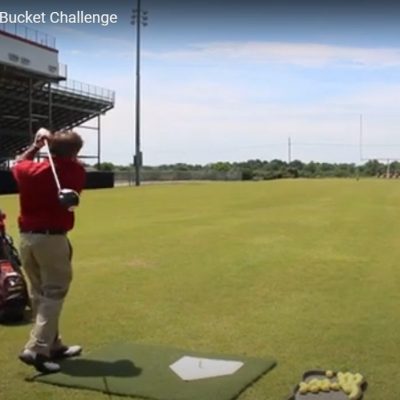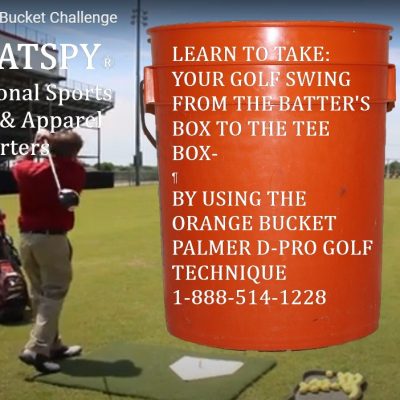Description
Inside-the-leather Classic Golf Swing Mechanics and simple golf swing tips for self-coaching techniques.

By: Charles W. Boatright, Author of The ESPY Golf Swing Coach, Delta Technique Geared for Distance and Control
The Phantom Factor of the Golfer’s Game
There are rules of golf that govern how it is played out on the golf course. But there are rules of how golf is played out between the ears. These 10- rules deal with how the golfer’s subconscious mind works, or the Phantom Factor. The Webster’s Dictionary defines the term Phantom – as an abstract idea or theory that is elusive and very difficult to visualize or to grasp.
I can’t think of a better word to describe the golfer’s Phantom, or what Bobby Jones described as the five-inch area between the golfer’s ears. Golf is so much more than technology of clubs, balls, techniques, and the golfer’s mechanics. Ninety percent of the golfer’s distance and control deals with the golfer’s mind.
Whether you’re a golfer taking golf lessons for the first time, a seasoned golfer with a single-digit handicap, or a professional golfer, you all have to figure out the Phantom Factor. The Phantom Factor is where the golfer’s motor skills, muscle memory, and natural instincts are kept. The Phantom Factor, or the golfer’s subconscious mind, is the most mysterious aspect that the golfer will have to deal with in their game, more so than their golf techniques and mechanics.
How Inconsequential Golf lessons and Practice Sessions Impact the Golfer’s Performance
The mysterious part of the subconscious mind is how typical practice sessions and golf lessons have very little impact on one’s ability to perform on the golf course. Take the very best golfers on the PGA or the LPGA and see how they perform over the course of the year. With the very best coaches in golf, they are unable to perform consistently.
It seems like it is difficult to address the Phantom Factor during the golfer’s lessons or the practice sessions. This is actually the case more times than not for all golfers of any level. The reason that the golfer finds it difficult to engage the other 90 percent of their golf game is that the subconscious mind doesn’t equate golf lessons and practice sessions to what is played out on the golf course.
It seems like what confidence the golfer gains during their golf lessons or practice sessions, especially by working on elements and techniques, seems to vaporize on the golf course. Sound familiar? The golfer can usually perform these elements and techniques after the first couple of holes of their round, but then their Phantom steps in and takes over their golf game on the golf course, and it doesn’t recognize the techniques or elements. If it is not instinctive, it’s not going to be a factor in the golfer’s performance.
This is where the golfer experiences the negative effect of the Phantom Factor. The Phantom Factor isn’t recognizing the hours spent in golf lessons or on the practice range; it’s applying instincts that the golfer has developed on the golf course to their performance. The subconscious mind disregards all the hours spent in golf lessons and on the practice range and relies only on instincts or habits. To form an instinct, the golfer has to perform it over-and-over consistently, under similar conditions over a few months, with three months being the minimum.
The Phantom Factor, the golfer’s subconscious mind, is not going by the practice script, but following its on tendencies. Mental Rules of Golf No. 7 kicks into action here. I was golfing with a friend one day, and he was commenting on how his new technique has helped his game. I asked how long have you used this technique on the golf course? He replied that he hadn’t. I commented, wait until your mind kicks in. Sure enough, at the third hole, he couldn’t use the new, unproven technique during the round.
So what does Rule No. 7 state- The subconscious mind always prevails in conflicts with the conscious mind. If the golfer hasn’t played with it under similar course conditions, the golfer won’t be able to perform it on the golf course.
This Self-Coaching Training Procedure details each of the 10- Rules of the Subconscious mind, the impact it has on the golfer’s game, and the practical application of each of the 10- Rules. This Self-Coaching Training Procedure also include the Sync/Preset golf swing technique that uses the baseball-type swing to cause the golf swing to become instinctive.
I produced a YouTube Video that not only demonstrated the Sync/Preset Maneuver, but also demonstrated how baseball is a great crossover sport to use in your routine training sessions. I used a throw-down Home Plate to demonstrate the 12-Foot Bunt-Type Chip/Pitch shot that is one of the hardest shots in golf to make. If you can perform this shot with camera and under the lights, you can perform this on the golf course.
Good aspect about the Bunt-Type Chip/Pitch Shot is that anywhere you practice your putting you can practice this Bunt-Type Chip/Pitch Shot. You just need a backstop, like the one I use to catch those wayward golf shots. Also the same type mechanics and techniques used in the Bunt-Type Chip/Pitch shot are the very same mechanics and techniques used in the full-type golf shot.
This Self-Coaching download contains 22 pages of simple step-by-step procedures, tips, and illustrations to help the golfer apply and retain the material presented on and off the golf course.
To develop your ESP Self-Coaching Technique Forum in Your Golf Game, please select to download your E-Copy of this Online Golf Self-Coaching Training Procedure (STP). The advantage of the online Golf STP is it a training procedure that you will have in your electronic files for future reference and NOT a one-time lesson where the presented material will be forgotten later or once on the golf course.





